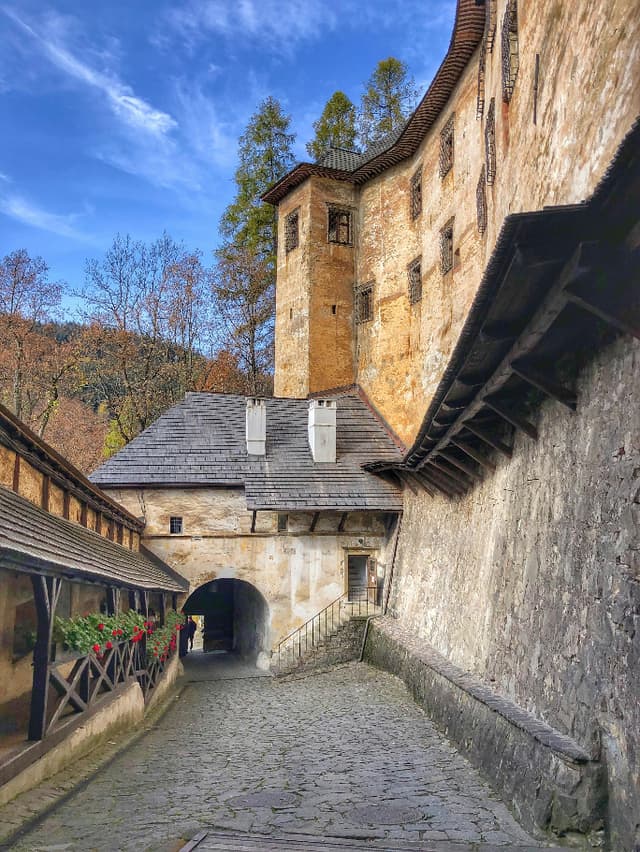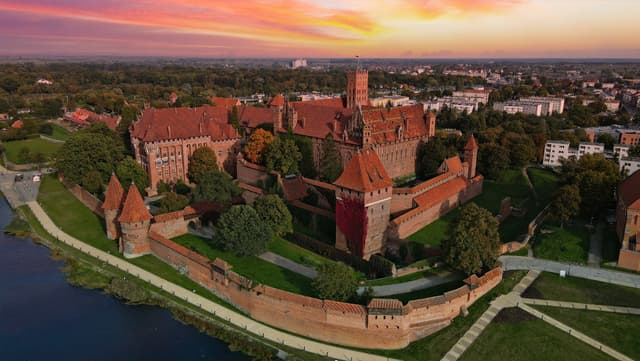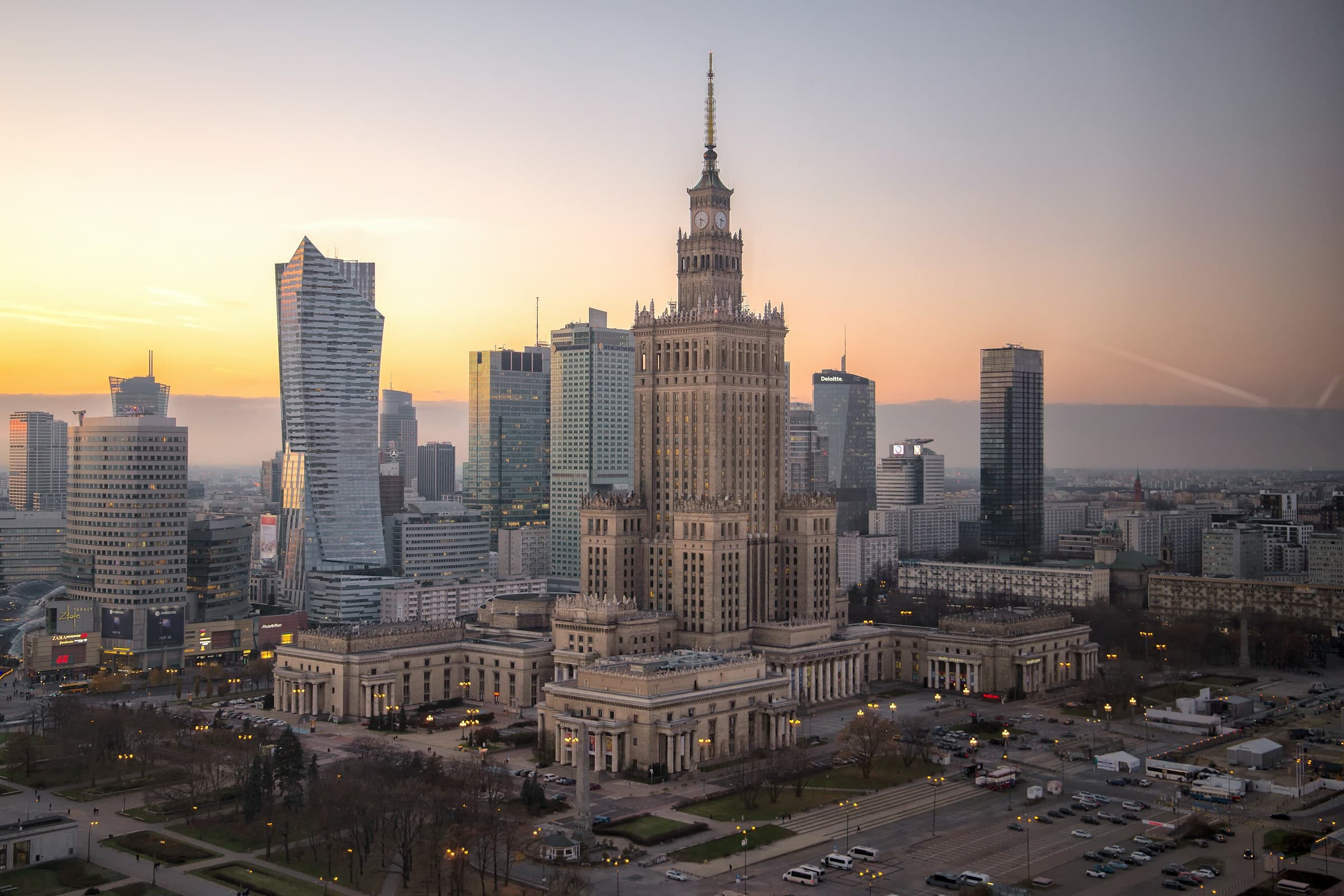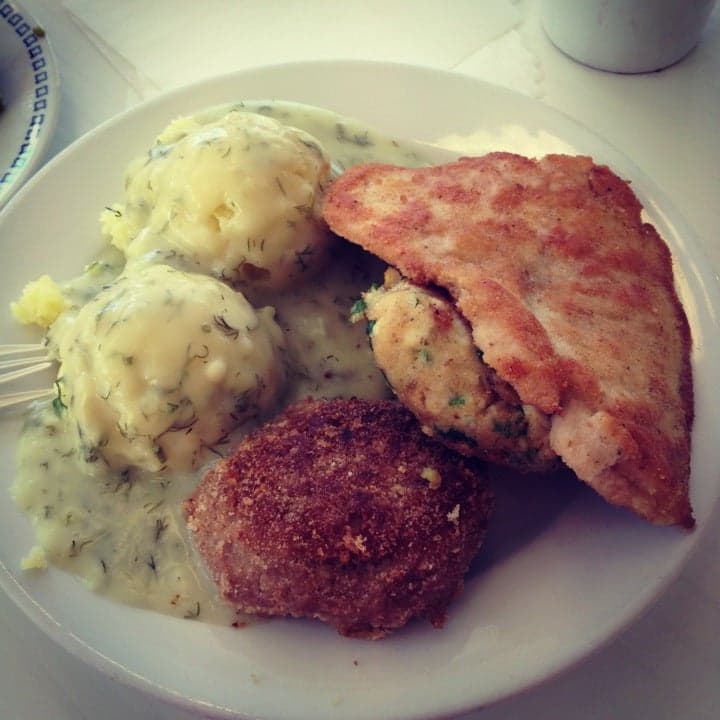Oravský Podzámok vs. Malbork
Oravský Podzámok
Oravský Podzámok is a small village in northern Slovakia, sitting at the foot of Orava Castle, one of the country's most famous medieval fortresses. It lies in the Orava region, about 11 km north of Dolný Kubín, surrounded by the rolling hills of the Orava Highlands. The Orava River flows through the area, shaping both the landscape and the history of the settlement. The village has a long history, with evidence of habitation dating back to the turn of the first millennium. However, it was first mentioned in writing in 1267, mainly in connection with the castle. For centuries, it was a settlement of castle workers and farmers under the rule of noble families like the Thurzos. It remained closely tied to the castle until the 19th century when it became an independent municipality. The main attraction is Orava Castle itself, an impressive fortress built on a steep rock overlooking the village. The castle has sections from different time periods, ranging from the 13th to the 17th ce...
Malbork
Malbork is a small city in northern Poland, but what makes it stand out is its enormous, medieval brick castle—one of the largest in the world. Built in the 13th century by the Teutonic Knights, the castle was more than just a fortress; it was the headquarters of a powerful religious and military order that controlled vast territories in the region. Today, Malbork Castle is a UNESCO World Heritage Site and a must-see for history lovers, with its towering walls, grand halls, and a fascinating museum that showcases medieval artifacts, weapons, and amber craftsmanship. Walking through its courtyards and chambers, you get a real sense of what life might have been like in the Middle Ages. The city itself is located along the Nogat River, about an hour’s drive from Gdańsk. While Malbork is mostly known for its castle, it has a peaceful, small-town charm. The streets are lined with trees, there are cozy cafés and restaurants serving Polish food, and you can still see traces of the city’s P...
Reviews
Reviews
| Item | Votes | Upvote |
|---|---|---|
| Quiet | 1 | |
| Small | 1 | |
| Pretty | 1 |
| Item | Votes | Upvote |
|---|---|---|
| No cons yet, would you like to add one? | ||
| Item | Votes | Upvote |
|---|---|---|
| Malbork has a huge medieval castle | 1 |
| Item | Votes | Upvote |
|---|---|---|
| No cons yet, would you like to add one? | ||
Frequently Asked Questions
Oravský Podzámok offers a rich historical experience with its proximity to Orava Castle, which dates back to the 13th century and showcases medieval life through its museum. However, Malbork is home to one of the largest brick castles in the world, also built in the 13th century, and is a UNESCO World Heritage Site. For those particularly interested in grand medieval architecture and extensive historical reenactments, Malbork may be the more appealing choice.
Oravský Podzámok is characterized by its quiet, small village atmosphere, making it ideal for those seeking peace and natural beauty. In contrast, while Malbork has a small-town charm, it can become lively during events like the 'Siege of Malbork' festival, which may attract larger crowds. Therefore, for a more tranquil experience, Oravský Podzámok is likely the better option.
Oravský Podzámok is surrounded by the Orava Highlands, offering excellent opportunities for hiking, cycling, and winter sports. Malbork, while it has some outdoor activities like boat trips on the Nogat River and kayaking, is more focused on its historical attractions. For those looking for a variety of outdoor adventures, Oravský Podzámok would be the preferable choice.
Malbork Castle is one of the largest castles in the world and is renowned for its impressive size and historical significance as a UNESCO World Heritage Site. Orava Castle, while also historically significant and picturesque, is smaller in scale. Therefore, for those seeking a grand castle experience, Malbork's castle is likely to be more impressive.
Oravský Podzámok is known for its proximity to Orava Castle, one of Slovakia's most famous medieval fortresses. The village has a rich history dating back to the first millennium and features several historical sites, including the Church of St. John of Nepomuk and various 18th and 19th-century buildings.
The pros of visiting Oravský Podzámok include its quiet atmosphere, small size, and picturesque scenery. There are currently no cons listed by users, making it an appealing destination for those looking to explore a tranquil village with historical significance.
In Oravský Podzámok, visitors can explore the impressive Orava Castle, hike in the surrounding Orava Highlands, and enjoy cycling or winter sports in the nearby mountains. The village's traditional atmosphere also offers a unique cultural experience.
Oravský Podzámok is located about 11 km north of Dolný Kubín in northern Slovakia. It can be reached by car or public transportation, making it accessible for tourists exploring the Orava region.
Malbork is known for its enormous medieval brick castle, which is one of the largest in the world. Built in the 13th century by the Teutonic Knights, the castle serves as a UNESCO World Heritage Site and features grand halls, towering walls, and a fascinating museum showcasing medieval artifacts.
The main pro of visiting Malbork is its huge medieval castle, which offers a unique glimpse into history and architecture. However, there are no significant cons listed by visitors, making it a generally favorable destination for history lovers.
Besides visiting the castle, visitors to Malbork can take a boat trip on the Nogat River for a unique view of the castle, rent a kayak for an active adventure, or explore the surrounding countryside filled with fields and forests. The city also features a large park and a dinosaur-themed amusement park, which is great for families.
The best time to visit Malbork is during the summer when the city hosts the 'Siege of Malbork' festival. This event features a large-scale reenactment of a 15th-century battle, complete with knights in armor, sword fights, and a medieval-style market.
Malbork has a peaceful, small-town charm with tree-lined streets, cozy cafés, and restaurants serving Polish food. The city retains traces of its Polish and German heritage in its architecture, making it a pleasant place to explore.



















